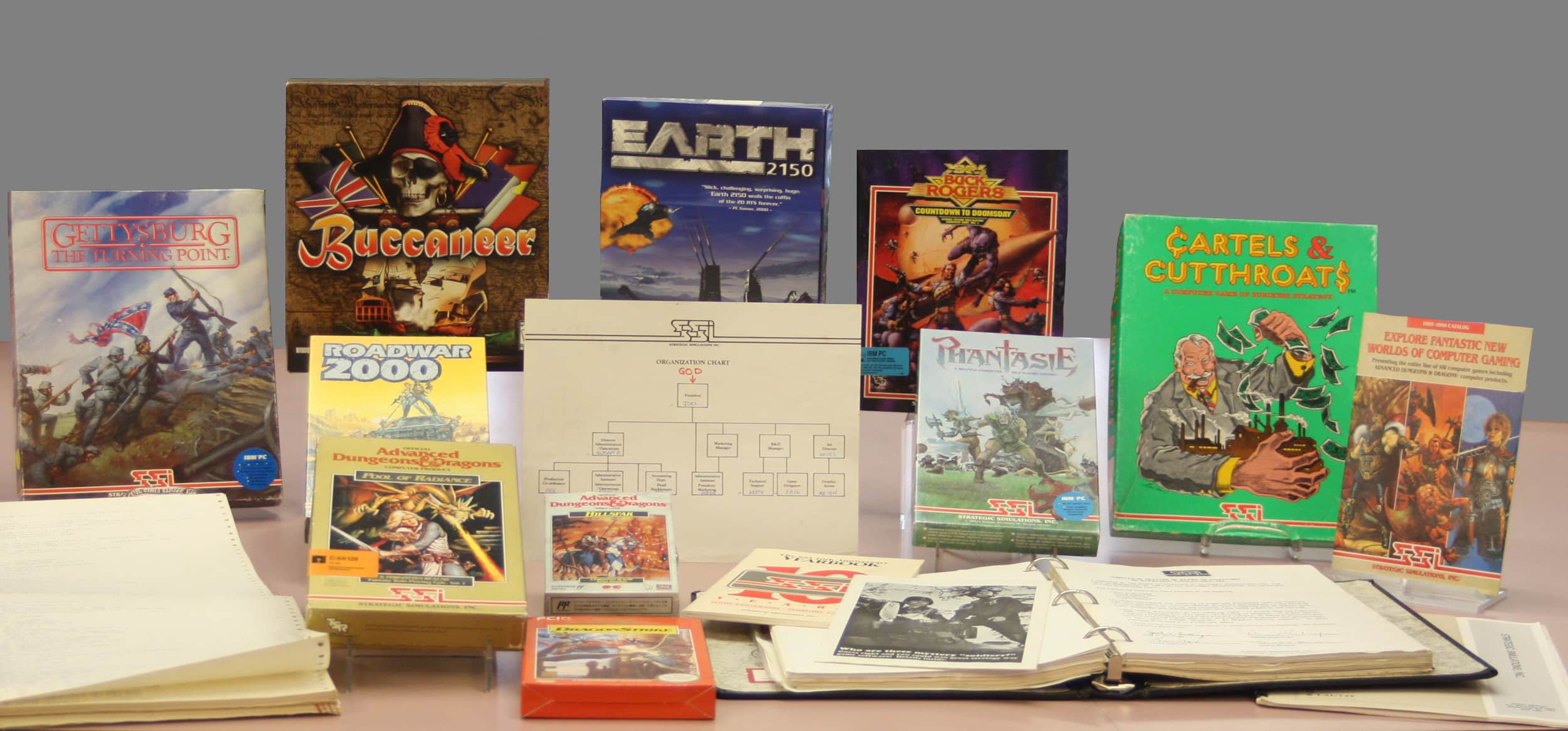When Joel Billings launched Strategic Simulations, Inc. (SSI) in 1979, he was fresh out of college and committed to the proposition that players would find wargaming fun and easier on a computer. The company’s first product, Computer Bismarck (1980), became the first computer wargame to gain commercial success.
Billings has given to ICHEG an extensive array of materials documenting more than 15 years of SSI history, from its founding through its acquisition by Mindscape in 1994. The collection includes documents, market research, company meeting notes, financial statements, clippings, company catalogs, and many other business records—including a printout of the master copy of the code for Computer Bismarck.

To understand SSI’s success, it’s useful to consider disruptive innovation. In The Innovator’s Dilemma, Clayton Christensen describes two types of improvements in business: sustaining innovations and disruptive innovations. Many businesses, Christensen writes, focus on sustaining innovations that improve products incrementally but fail to account for disruptive, revolutionary changes. Companies that are more nimble and innovative introduce new technologies and become market leaders. This held true in making wargames.
Wargaming boomed in the 1970s as companies like Avalon Hill and SPI produced increasingly complex board game simulations of military battles, diplomatic maneuvers, commercial enterprises, and even sports contests. Billings loved these games, but he recognized from programming while in college that computers could serve as an opponent while also taking care of such tedious wargaming tasks as calculating odds. (The ICHEG collection includes the code for Tank, a game Billings programmed while still in school.) SSI’s initial business plans articulated this opportunity, noting that neither Avalon Hill nor SPI dedicated resources to computer games. Billings sensed that by marrying computers and wargames, he could introduce a disruptive technology.
Computer Bismarck proved a hit with consumers and critics alike. The game pitted players against each other or the computer in the hunt for the massive battleship named for the former German chancellor. Under Billings’s leadership, SSI soon established itself as the foremost creator of simulations, releasing war games such as Gary Grigsby’s Guadalcanal Campaign, as well as titles such as Computer Quarterback and Cartels & Cutthroats by designer Dan Bunten. By 1985, sales surpassed $4 million; for the nascent computer games industry that was a large number.
But the company’s greatest success came in 1987 when it won a coveted contract from TSR to produce a computer version of Advanced Dungeons & Dragons (AD&D). In many ways, it’s not surprising that TSR selected SSI to produce the first computer version of AD&D; as Jon Peterson points out in his recent book Playing at the World, role-playing games emerged in the 1970s out of the broader wargaming and simulation communities. But the documents in Billings’s collection show that it also took a lot of hard work to convince TSR to award SSI the rights, and for SSI to make the games. In 1988, Pool of Radiance, the company’s first gold box AD&D title, became an unqualified commercial success, significantly boosting the company’s sales.
SSI followed with numerous other gold box AD&D games, as well as many more simulations. The records in the Strategic Simulations, Inc. Collection document how the company grew until Mindscape purchased it. For anyone interested in the history of computer games and how pioneering companies like SSI built an industry, these records offer a wealth of information. The Strong is proud to preserve them and grateful to Joel Billings for donating them for the benefit of researchers now and in the future.
By Jon-Paul Dyson, Director, International Center for the History of Electronic Games and Vice President for Exhibits
 Hours 10 a.m.–5 p.m. | Fri. & Sat. till 8 p.m.
Hours 10 a.m.–5 p.m. | Fri. & Sat. till 8 p.m.